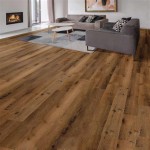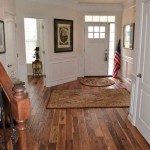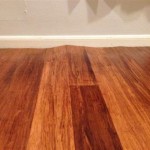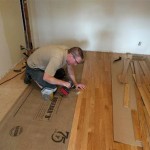Tongue and Groove Porch Flooring: Exploring Composite Options
The porch, a transitional space between the interior of a home and the exterior environment, is often a focal point for relaxation and socializing. Consequently, the choice of flooring material significantly impacts the porch's aesthetics, durability, and overall appeal. Tongue and groove flooring, characterized by interlocking edges that create a seamless and aesthetically pleasing surface, has long been a popular choice. However, traditional wood tongue and groove porch flooring can be susceptible to moisture damage, insect infestation, and the need for frequent maintenance. This has led to the increasing popularity of composite alternatives, which offer a blend of durability, aesthetics, and low-maintenance characteristics.
Composite tongue and groove porch flooring is engineered to mimic the look and feel of natural wood while overcoming its inherent limitations. These materials are typically composed of a blend of wood fibers and recycled plastics, creating a product that is resistant to rot, decay, and insect damage. The interlocking tongue and groove design ensures a secure and consistent installation, resulting in a visually appealing and structurally sound porch surface.
The selection of a suitable composite tongue and groove porch flooring option requires careful consideration of several factors, including material composition, aesthetics, installation requirements, and long-term performance expectations. A thorough understanding of these aspects will enable homeowners and contractors to make informed decisions and achieve a porch that is both beautiful and durable.
Understanding Composite Material Composition
The term "composite" encompasses a broad range of materials, each with its own unique blend of ingredients and manufacturing processes. Understanding the composition of composite porch flooring is crucial for assessing its performance characteristics and suitability for a specific application. The ratio of wood fibers to plastic, the type of plastic used, and the presence of additives all influence the material's strength, moisture resistance, UV stability, and overall lifespan.
Wood-plastic composites (WPCs) are the most common type of composite porch flooring. These materials typically consist of a blend of wood flour or wood fibers and recycled or virgin plastics, such as polyethylene (PE), polypropylene (PP), or polyvinyl chloride (PVC). The wood fibers provide rigidity and a natural aesthetic, while the plastic component binds the fibers together and imparts moisture resistance. The specific type and grade of plastic used significantly impact the composite's performance. For example, PVC composites generally offer superior moisture resistance and durability compared to PE composites, but they may also be more expensive.
The percentage of wood fibers in a WPC also influences its properties. Higher wood fiber content can result in a more natural appearance and improved screw-holding ability, but it can also reduce the material's resistance to moisture and decay. Conversely, higher plastic content enhances moisture resistance and reduces maintenance requirements, but it may also result in a more artificial appearance. The ideal wood-to-plastic ratio depends on the desired balance between aesthetics, durability, and cost.
In addition to wood and plastic, composite porch flooring may contain various additives, such as UV stabilizers, color pigments, fungicides, and flame retardants. UV stabilizers protect the material from fading and degradation caused by sunlight exposure. Color pigments provide the desired color and aesthetic appeal. Fungicides inhibit the growth of mold and mildew, further enhancing the material's resistance to decay. Flame retardants improve the material's fire resistance, making it safer for residential applications.
The specific composition of a composite porch flooring product is typically proprietary information, but manufacturers often provide details about the types of materials used and their relative percentages. Reviewing this information can help assess the material's suitability for a specific application and compare different composite options.
Aesthetic Considerations: Mimicking the Look of Natural Wood
One of the primary motivations for choosing composite porch flooring is its ability to mimic the look and feel of natural wood without the associated maintenance requirements. Manufacturers employ various techniques to achieve a realistic wood grain appearance, including embossing, texturing, and multi-tonal coloring.
Embossing involves creating a raised or recessed pattern on the surface of the composite material to simulate the grain of wood. This can be achieved through various methods, such as using textured rollers or molds during the manufacturing process. The depth and complexity of the embossing pattern can significantly impact the realism of the wood grain appearance. Some manufacturers offer deep-embossed patterns that closely resemble the texture of real wood, while others offer more subtle patterns that provide a more understated look.
Texturing involves creating a rough or uneven surface on the composite material to further enhance the wood-like appearance. This can be achieved through various methods, such as brushing, sanding, or applying a textured coating. Texturing not only enhances the aesthetic appeal of the flooring but also improves its slip resistance, making it safer for use in outdoor applications.
Multi-tonal coloring involves using multiple shades of color to create a more natural and varied appearance. This can be achieved by blending different colored pigments during the manufacturing process or by applying a multi-colored stain or finish to the surface of the flooring. Multi-tonal coloring can effectively mimic the natural variations in color that are found in real wood, resulting in a more realistic and appealing aesthetic.
The color options available for composite porch flooring are typically extensive, ranging from light, natural wood tones to darker, more sophisticated hues. Manufacturers often offer a variety of finishes, such as matte, satin, and glossy, to further customize the appearance of the flooring. The specific color and finish chosen should complement the overall style of the home and the surrounding landscape.
In addition to simulating the appearance of traditional wood flooring, some composite porch flooring options are designed to mimic the look of exotic hardwoods, such as ipe or teak. These materials offer the same durability and low-maintenance benefits as other composite options but provide a more unique and upscale aesthetic.
Installation and Maintenance Considerations
The installation of composite tongue and groove porch flooring is generally similar to that of traditional wood flooring, but there are some important differences to consider. Proper installation is crucial for ensuring the long-term performance and aesthetic appeal of the flooring.
Before installation, it is essential to prepare the subfloor properly. The subfloor should be level, clean, and dry. Any existing flooring or debris should be removed, and any unevenness should be addressed. A vapor barrier may be necessary to prevent moisture from seeping up through the subfloor and damaging the composite flooring.
Composite tongue and groove porch flooring is typically installed using fasteners, such as screws or hidden fasteners. The specific fastening method will depend on the manufacturer's recommendations and the type of subfloor. It is important to use the correct type and size of fasteners to ensure a secure and long-lasting installation.
When installing composite tongue and groove flooring, it is important to leave a small gap between the boards to allow for expansion and contraction due to temperature and humidity changes. This gap is typically specified by the manufacturer and should be carefully adhered to during installation. Failure to leave an adequate expansion gap can result in buckling or warping of the flooring.
One of the key advantages of composite porch flooring is its low-maintenance requirements. Unlike traditional wood flooring, composite flooring does not require painting, staining, or sealing. However, it is important to clean the flooring regularly to remove dirt, debris, and stains. Mild soap and water are typically sufficient for cleaning composite porch flooring. More stubborn stains may require the use of a specialized composite deck cleaner.
While composite porch flooring is resistant to rot, decay, and insect damage, it is not completely impervious to these issues. Proper ventilation and drainage are essential for preventing moisture buildup, which can create a favorable environment for mold and mildew growth. It is also important to inspect the flooring regularly for signs of damage or wear and to address any issues promptly.
Over time, composite porch flooring may experience some fading or discoloration due to sunlight exposure. However, this fading is typically minimal and does not significantly affect the overall appearance of the flooring. The use of UV stabilizers in the composite material helps to minimize fading and prolong the lifespan of the flooring.
In summary, composite tongue and groove porch flooring presents a compelling alternative to traditional wood options, offering a balance of aesthetic appeal, durability, and low-maintenance characteristics. Understanding the composition, aesthetics, installation, and maintenance requirements of these materials is essential for making informed decisions and achieving a porch that is both beautiful and long-lasting. Careful consideration of these factors will ensure that the chosen composite flooring option meets the specific needs and preferences of the homeowner or contractor.

Tongue And Groove Decking Boards

1 In X 3 16 Ft Gray Tongue And Groove Pvc Porch Deck Board The Composite Boards Department At Com

Tongue And Groove Floors Waterproof Composite Porch Floor

Timbertech Advanced Pvc Porch Boards Capped Polymer Porches

What Is Composite Tongue And Groove Decking

Timbertech Advanced Pvc Porch Boards By Azek Decksdirect

1 In X 6 16 Ft Gray Tongue And Groove Pvc Porch Deck Board The Composite Boards Department At Com

Composite Tongue And Groove Deck Flooring

Lumberock Synthetic Decking Hdpe Deck Boards Masters Of

Tongue And Groove Composite Deck Boards At Com
Related Posts








